Artwork Guidelines
Submitting files for print is an important step in the printing process, and it is crucial to ensure that the files are prepared correctly to avoid any errors or delays. Following these guidelines can ensure high-quality prints and a smooth printing process!
- File Format: We accept pretty much any format you can throw at us! Some of the more popular formats include (but are not limited to) PDF, PSD, AI, TIFF, JPEG, SVG, and PNG. More than likely if you already have your artwork ready to go it is in one of these formats! The best file format for print is PDF (Portable Document Format) as it preserves the layout, fonts, and graphics of the document. In addition, if you or your designer has already designed the cut lines for a custom cut sticker, PDF files format will preserve the spot colors necessary to cut the stickers exactly to your specifications!
- Bleed: For squared and round stickers you will have the option when you are customizing your stickers to have us add a 1/4" border around your artwork. If this is not how you intend for your final product to look and you would like the artwork you provide to be printed from edge to edge on your stickers, please be sure to design your artwork with a bleed. A bleed is the area outside the final trim of the printed piece. It ensures that the design extends to the edge of the paper, and that there are no visible white borders. Generally speaking, a good rule to follow is that no text or crucial parts of your artwork should be 0.125 inches (or 3mm) from the edge of the file.
- Resolution: More pixels = better prints! The resolution of your artwork should ideally be 300 DPI (dots per inch) or better for high-quality printing. It ensures that the images and graphics are sharp and clear. Lower resolutions can result in blurry or pixelated prints. If you are unsure as to whether your artwork is in the correct resolution, not to worry! You will receive a digital proof prior to your stickers being printed that should give you an idea of what (if any) degradation to expect from a lower quality image. If we see something that we know will not print to our standards we will reach out to you to prior to providing you with a proof to let you know of any issues we may foresee with the artwork that has been provided.
- Color Mode: The color mode of the file should be set to CMYK (Cyan, Magenta, Yellow, Key/Black). CMYK is the standard color mode for printing. RGB (Red, Green, Blue) is used for digital screens, and converting to CMYK can result in color shifts. If you are unsure as to whether your artwork is in CMYK or RGB - or you are unable to convert it yourself - not to worry! You will receive a digital proof prior to your stickers being printed that should give you an idea of how your colors may have changed during the conversion to CMYK.
- Fonts (Only applies to PDF / AI / PSD Artwork): The fonts used in the file should be embedded or outlined. Embedding ensures that we have access to the font files, and outlining converts the fonts to vector graphics, ensuring that the text is not distorted.
- Proofreading: Before submitting the file, please be sure to proofread the content for spelling, grammar, and punctuation errors. The software we use, unfortunately, does not contain spell check!
- File Size: The file size should be optimized for printing. Large files can slow down the printing process and may result in errors or delays. It is recommended to compress the file size without compromising the quality of the print.
We hope this brief guide clears up any questions you may have regarding formatting your artwork. If you have any further questions or requests, please be sure to contact us so that we can guide you through the design process.
Additionally: For Adobe Photoshop and Illustrator users feel free to use one of our design templates when laying out your artwork to ensure that your idea fits within the correct specifications!
Lets make something spectacular together!


